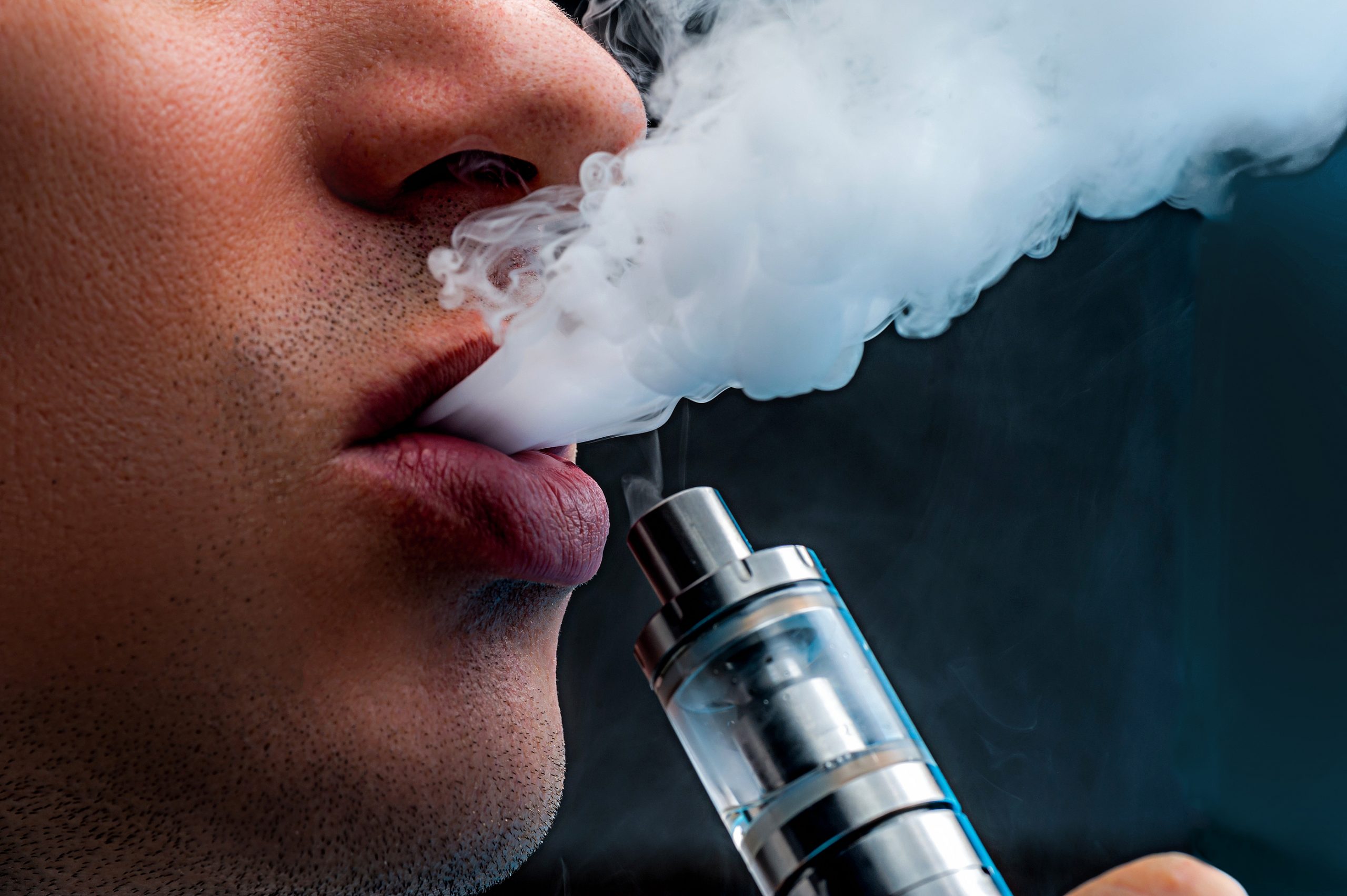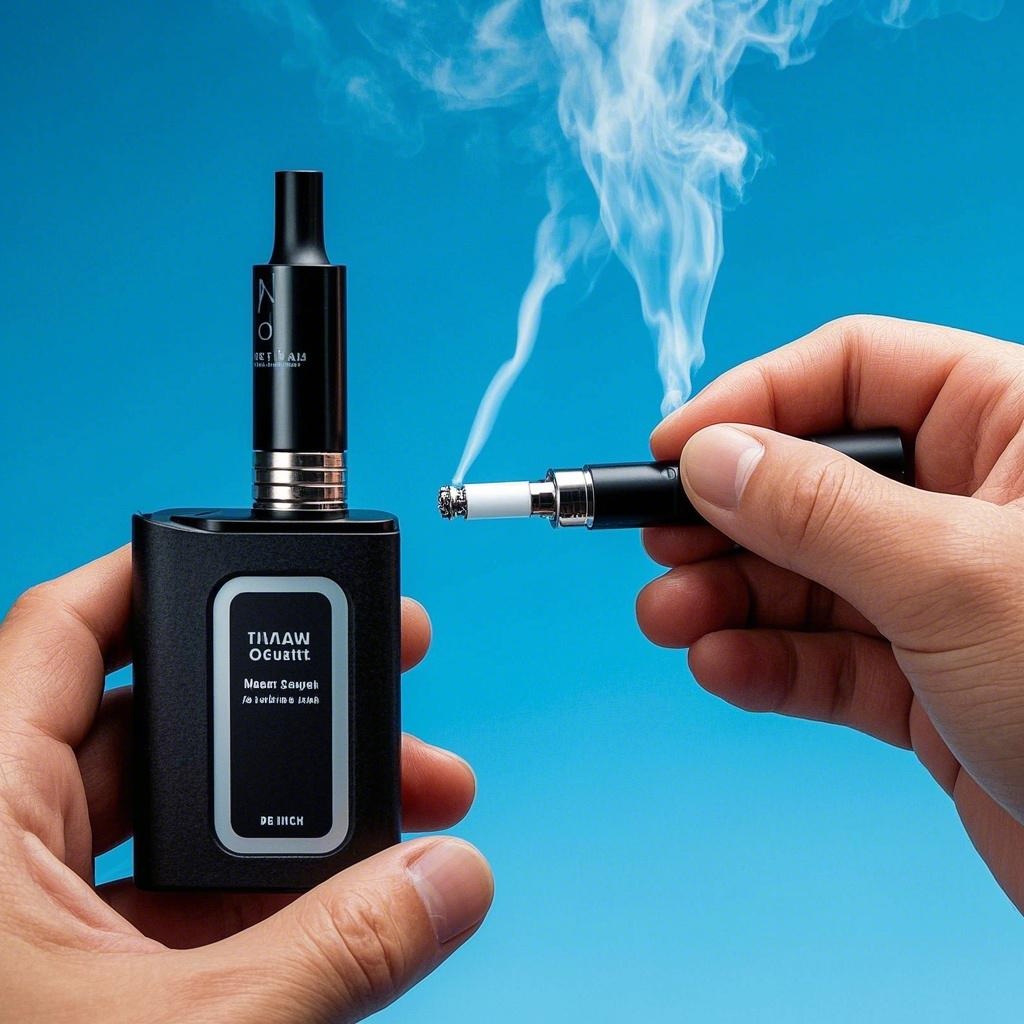E-cigarettes have become a popular alternative to traditional smoking, but with their rise in use comes an important question: Do e-cigarettes cause lung cancer? While many believe e-cigarettes are a safer option than regular cigarettes, recent research suggests that their impact on lung health may still carry significant risks. In this article, we will explore the potential link between e-cigarette use and lung cancer, examining scientific findings, the chemicals involved, and whether switching to e-cigarettes truly reduces cancer risks. Let’s take a closer look at what the latest studies reveal and what you should know to make informed decisions about your health.
What Are E-Cigarettes?
E-cigarettes, also known as electronic cigarettes, are battery-powered devices that vaporize a liquid to simulate the experience of smoking. Unlike traditional cigarettes, e-cigarettes do not burn tobacco. Instead, they heat a liquid solution, commonly referred to as “e-liquid” or “vape juice,” which contains a mixture of nicotine, flavorings, and other chemicals. This liquid is then inhaled as a vapor, providing the user with the sensation of smoking without the harmful tar and many of the toxic substances found in combustible cigarettes.
How Do E-Cigarettes Work?
The basic operation of an e-cigarette involves the following steps:
- Power Source: The e-cigarette is powered by a rechargeable battery.
- Atomizer: The battery powers a heating element called an atomizer, which vaporizes the e-liquid.
- Vaporization: The e-liquid is heated to produce a vapor that the user inhales, mimicking the act of smoking.
Main Components of E-Cigarettes
The main ingredients in e-cigarettes are as follows:
| Component | Description |
|---|---|
| Nicotine | The addictive substance found in tobacco. Can be adjusted in strength. |
| Propylene Glycol (PG) | A colorless liquid used to create the vapor. Generally considered safe in small amounts. |
| Vegetable Glycerin (VG) | A thicker liquid that helps produce more vapor. |
| Flavorings | Various chemicals used to give the vapor flavor. Often food-grade but not always safe when inhaled. |
Common Types of E-Cigarettes
There are several types of e-cigarettes, with the most common being:
- Disposable E-Cigarettes: Pre-filled with e-liquid, designed for single use. Once the e-liquid runs out, the device is discarded.
- Rechargeable E-Cigarettes: These devices have a rechargeable battery and can be refilled with e-liquid. They are more economical and environmentally friendly than disposable versions.
- Pod Systems: Compact devices that use pre-filled pods. These are popular for their ease of use and portability.
- Vape Pens: Larger than pod systems, vape pens allow users to refill with e-liquid and often have adjustable settings for vapor production.
Understanding how e-cigarettes work and what they contain is essential to evaluating their risks, especially when considering their potential link to serious health issues like lung cancer.
What is the Relationship Between E-Cigarettes and Lung Cancer?
The potential link between e-cigarette use and lung cancer has been the subject of numerous studies in recent years. While e-cigarettes are often marketed as a safer alternative to traditional smoking, the scientific community is still debating whether they pose a similar risk for developing lung cancer. In this section, we will explore the current research findings, the chemicals involved, and the potential hazards that e-cigarettes could present to lung health.
Current Scientific Research on E-Cigarettes and Lung Cancer
Several studies have been conducted to assess the potential carcinogenic effects of e-cigarette use. Although conclusive evidence directly linking e-cigarettes to lung cancer is still lacking, there are concerns about the chemicals in e-cigarette vapor that may contribute to cancer risk over time.
One study published in the American Journal of Physiology found that exposure to e-cigarette vapor resulted in DNA damage in the lung tissue of lab mice, a process that could lead to cancer development. While this was an animal study, it suggests a potential risk that should not be ignored.
Another study published in Toxicology and Applied Pharmacology (2020) highlighted that certain e-cigarette flavors and chemicals, such as formaldehyde and acetaldehyde, could cause lung tissue damage, raising concerns about their long-term effects.
Is There a Direct Causal Relationship?
At present, there is no definitive evidence establishing a direct causal relationship between e-cigarettes and lung cancer. However, the presence of harmful chemicals such as nicotine, formaldehyde, and other aldehydes in e-cigarette vapor is concerning. The long-term exposure to these substances could increase the risk of respiratory diseases, including lung cancer, though more research is needed to confirm this link.
Key Factors to Consider:
- Nicotine: While nicotine is not a carcinogen itself, it has been shown to promote tumor growth in animal models, potentially accelerating the development of cancer in the lungs.
- Formaldehyde and Acetaldehyde: These chemicals are known carcinogens and have been found in e-cigarette vapor at varying levels, depending on the temperature at which the e-liquid is vaporized.
- Other Harmful Chemicals: E-cigarette vapor can also contain heavy metals such as lead and cadmium, which are toxic and may contribute to lung damage and cancer risk over time.
The Risks of Chemical Exposure from E-Cigarettes
The key risk associated with e-cigarettes lies in the chemicals they produce when vaporized. Unlike traditional cigarettes, which burn tobacco and release tar, e-cigarettes produce fewer toxic substances. However, they still contain compounds that are harmful to lung tissue:
| Chemical | Potential Risk |
|---|---|
| Nicotine | Can promote tumor growth and accelerate cancer formation. |
| Formaldehyde | Known carcinogen, can cause lung damage with prolonged exposure. |
| Acetaldehyde | Can irritate lungs and is classified as a carcinogen. |
| Heavy Metals | Can cause lung tissue damage and increase cancer risk over time. |
In summary, while e-cigarettes may not yet have a direct causal link to lung cancer, the presence of harmful chemicals and their potential to damage lung tissue suggests that users may be at increased risk over time. As the body of research on this topic continues to grow, more conclusive evidence will be necessary to understand the full extent of the risks.
How Do E-Cigarette Ingredients Affect Lung Health?
E-cigarettes contain a variety of substances that can have potential impacts on lung health. While many users switch to e-cigarettes in hopes of reducing the harm associated with smoking traditional cigarettes, the chemicals in e-cigarette vapor can still cause significant harm to the lungs. In this section, we will examine the primary ingredients in e-cigarettes and their potential effects on lung tissue, including whether these substances could lead to lung cancer or other respiratory diseases.
Nicotine: The Addictive Substance
Nicotine is the primary addictive substance in e-cigarettes, and while it is not classified as a direct carcinogen, its effects on the lungs and overall health are significant. Nicotine can:
- Inflame the airways: Studies have shown that nicotine can cause inflammation in the lungs, which can damage lung tissue over time. Chronic inflammation is a known factor in the development of various respiratory diseases, including chronic obstructive pulmonary disease (COPD) and emphysema.
- Promote tumor growth: Some studies suggest that nicotine can accelerate the growth of existing tumors and may contribute to the development of cancer by affecting gene expression in lung cells.
Chemical Additives: Flavorings and Preservatives
E-liquids used in e-cigarettes often contain a variety of flavoring agents, many of which are intended for food products but have not been extensively tested for inhalation safety. These chemicals, when heated, may produce harmful byproducts that can affect the lungs:
- Diacetyl: This chemical, used in some flavorings to create a buttery taste, has been linked to a lung disease called “popcorn lung” (bronchiolitis obliterans), which causes scarring and inflammation of the lung’s airways.
- Acetaldehyde and Formaldehyde: These chemicals are byproducts of the heating process and are known to be toxic to the lungs. They can cause irritation and increase the risk of respiratory diseases, including cancer.
Aerosol Components: Metals and Particulate Matter
E-cigarettes also release fine particulate matter and metals, which can be inhaled into the lungs. These components are not present in traditional cigarette smoke but are a result of the vaporization process. The most concerning substances include:
- Heavy metals: Studies have found trace amounts of heavy metals like lead, cadmium, and nickel in e-cigarette vapor. These metals can be inhaled into the lungs, where they can cause toxicity and inflammation. Long-term exposure to heavy metals is known to increase the risk of lung cancer and other respiratory diseases.
- Ultrafine particles: These tiny particles can penetrate deep into the lungs and cause irritation. Over time, exposure to ultrafine particles may contribute to chronic lung conditions and may increase the risk of cancer.
Potential for Lung Cancer and Other Respiratory Diseases
The chemicals present in e-cigarette vapor have the potential to damage lung tissue and increase the risk of lung cancer and other respiratory diseases. While e-cigarettes are often viewed as a safer alternative to smoking traditional cigarettes, they are not without their risks. The following are some potential outcomes of prolonged exposure to e-cigarette ingredients:
- Increased Cancer Risk: As mentioned earlier, substances like formaldehyde, acetaldehyde, and heavy metals have been linked to cancer. Inhalation of these chemicals may increase the risk of lung cancer, although the full extent of this risk is still under investigation.
- Chronic Respiratory Diseases: Regular exposure to the irritants in e-cigarette vapor can lead to chronic conditions like COPD, asthma, and bronchitis. The inflammation and tissue damage caused by nicotine and other chemicals can compromise lung function over time.
- Popcorn Lung (Bronchiolitis Obliterans): Inhalation of diacetyl, a chemical used in some e-liquid flavorings, has been associated with a condition known as “popcorn lung,” which is a severe and irreversible lung disease that causes the airways to narrow and scar.
Summary of Key Risks
| Ingredient | Potential Health Effects |
|---|---|
| Nicotine | Causes airway inflammation, promotes tumor growth, increases cancer risk. |
| Diacetyl | Associated with popcorn lung, a debilitating lung disease. |
| Formaldehyde | Known carcinogen, irritates lung tissue, increases cancer risk. |
| Acetaldehyde | Toxic to lungs, linked to respiratory diseases and cancer. |
| Heavy Metals | Toxic, causes lung damage and increases cancer risk. |
| Ultrafine Particles | Increases lung irritation and chronic respiratory diseases. |
In conclusion, while e-cigarettes may not pose the same immediate risks as traditional smoking, the ingredients they contain can still harm the lungs and increase the likelihood of developing lung cancer and other serious respiratory diseases. It is important for users to be aware of these risks and understand the potential long-term consequences of using e-cigarettes.
Are E-Cigarettes Safer Than Traditional Cigarettes?
One of the most common claims made by e-cigarette manufacturers and users is that e-cigarettes are a safer alternative to smoking traditional cigarettes. This has led many to believe that switching to e-cigarettes will significantly reduce their risk of lung cancer and other smoking-related diseases. But is this really the case? In this section, we will compare the risks of e-cigarettes and traditional cigarettes, specifically focusing on cancer risks, lung health, and the potential for harm.
Comparing Cancer Risks: E-Cigarettes vs. Traditional Cigarettes
Traditional cigarettes are known to be one of the leading causes of cancer, particularly lung cancer. They contain thousands of harmful chemicals, including known carcinogens like tar, benzene, and polycyclic aromatic hydrocarbons (PAHs), which are released when tobacco is burned. Long-term exposure to these chemicals increases the risk of lung cancer, heart disease, and respiratory conditions.
On the other hand, e-cigarettes do not burn tobacco. Instead, they vaporize e-liquid, which typically contains nicotine, propylene glycol, vegetable glycerin, and flavorings. Although e-cigarettes produce fewer toxic chemicals than traditional cigarettes, they are not entirely free of risks. Studies have shown that e-cigarette vapor can contain harmful substances like formaldehyde, acetaldehyde, and heavy metals, which are also found in traditional cigarette smoke and are linked to cancer.
| Substance | Present in Traditional Cigarettes | Present in E-Cigarettes | Health Risks |
|---|---|---|---|
| Nicotine | Yes | Yes | Addiction, potential tumor promotion |
| Formaldehyde | Yes | Yes | Known carcinogen, lung irritation |
| Acetaldehyde | Yes | Yes | Toxic to lungs, carcinogenic |
| Heavy Metals | Yes | Yes | Lung damage, cancer risk |
| Tar | Yes | No | Major carcinogen, lung cancer |
| Benzene | Yes | No | Carcinogen, linked to leukemia and cancer |
While e-cigarettes expose users to fewer toxic chemicals compared to traditional cigarettes, they are not without risk. Traditional cigarettes, due to the burning of tobacco, release tar and additional harmful compounds that are not typically found in e-cigarette vapor.
Is E-Cigarette Use Really “Safer”?
Many people are under the impression that e-cigarettes are much safer than traditional smoking, but the term “safer” needs to be understood with caution. According to health experts and organizations like the Centers for Disease Control and Prevention (CDC) and the World Health Organization (WHO), while e-cigarettes may reduce exposure to some harmful chemicals compared to traditional smoking, they are not risk-free.
- CDC and WHO Stance: Both the CDC and WHO acknowledge that e-cigarettes carry a lower risk of exposure to some of the most harmful substances found in traditional cigarettes, but they caution that e-cigarettes are still a health risk, especially for non-smokers and young people.
- Expert Opinion: Dr. Stanton Glantz, a professor of medicine at the University of California, San Francisco, argues that while e-cigarettes may not have the same immediate risks as traditional cigarettes, they are still harmful and can contribute to long-term respiratory issues and potentially cancer.
Understanding the Misconception of “Safer”
The perception that e-cigarettes are “safe” or “much safer” than traditional cigarettes is a common misconception. While switching from smoking to e-cigarettes may reduce exposure to certain harmful substances like tar, it does not eliminate the risk of lung cancer or other serious diseases. The key point is that e-cigarettes may be “less harmful” than traditional cigarettes, but they are not “safe.”
- Safer in Comparison: In terms of carcinogen exposure, e-cigarettes are generally considered less harmful than traditional cigarettes. However, this does not mean they are free of risks. Users are still inhaling chemicals that could harm lung tissue and potentially lead to cancer or other respiratory conditions.
- A Harm Reduction Strategy, Not a Solution: Some public health experts suggest that while e-cigarettes may serve as a harm reduction strategy for people trying to quit smoking, they should not be seen as a long-term solution. Non-smokers, especially teenagers, should avoid starting to use e-cigarettes.
Summary: E-Cigarettes and Lung Health
| Aspect | Traditional Cigarettes | E-Cigarettes |
|---|---|---|
| Cancer Risk | High (due to tar and toxic chemicals) | Moderate (due to some carcinogens) |
| Respiratory Diseases | High (COPD, emphysema, bronchitis) | Moderate (potential for lung irritation, chronic conditions) |
| Addiction Risk | High (due to nicotine) | High (due to nicotine) |
| Long-Term Effects | Well-documented (cancer, heart disease) | Not fully known (requires more research) |
In conclusion, while e-cigarettes may be a less harmful alternative to traditional smoking, they are not completely safe. Users still face risks, particularly when it comes to lung health, and the potential long-term effects of e-cigarette use remain unclear. The best option for lung health is to avoid smoking and vaping altogether.




